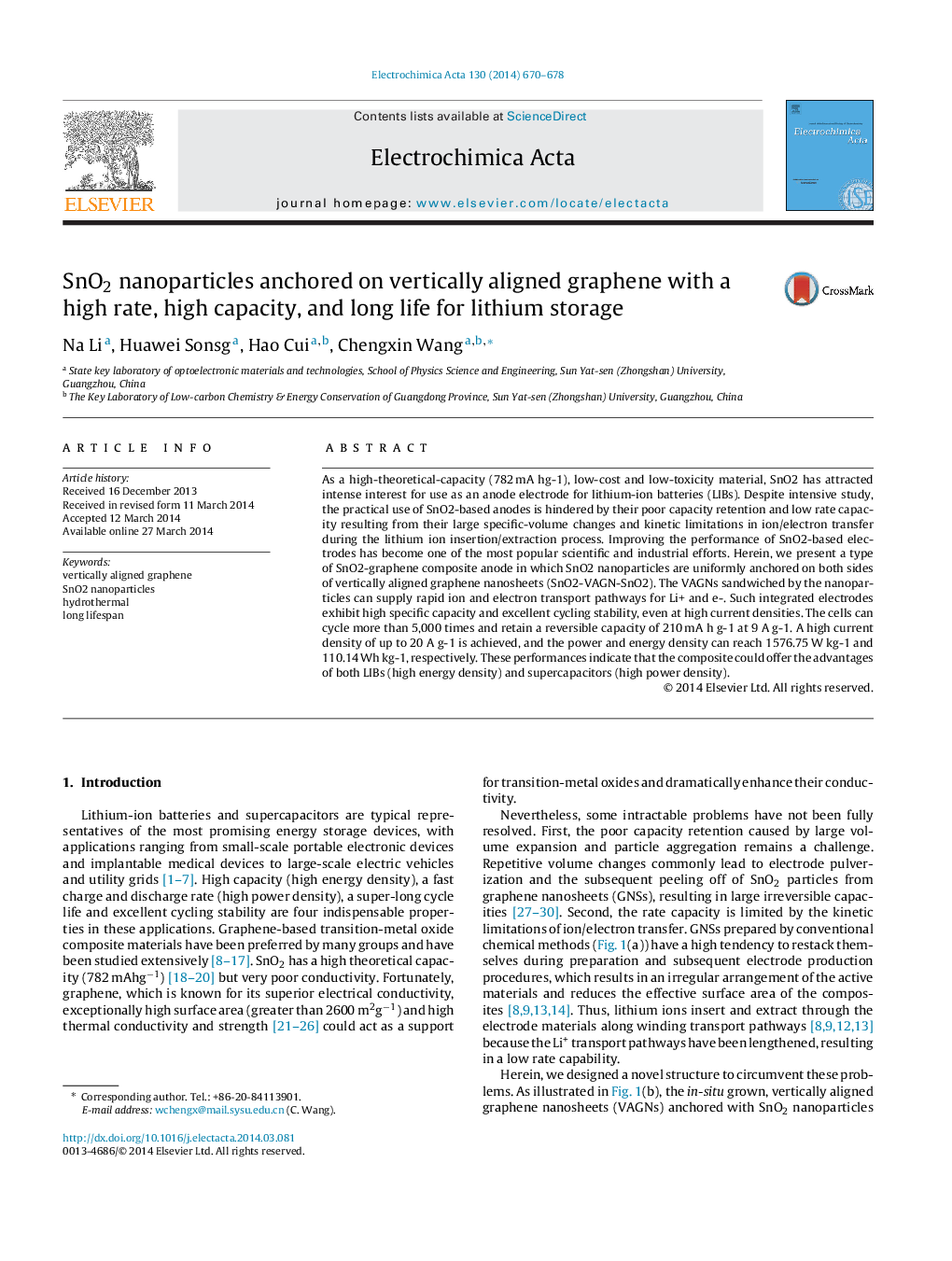| Article ID | Journal | Published Year | Pages | File Type |
|---|---|---|---|---|
| 185905 | Electrochimica Acta | 2014 | 9 Pages |
As a high-theoretical-capacity (782 mA hg-1), low-cost and low-toxicity material, SnO2 has attracted intense interest for use as an anode electrode for lithium-ion batteries (LIBs). Despite intensive study, the practical use of SnO2-based anodes is hindered by their poor capacity retention and low rate capacity resulting from their large specific-volume changes and kinetic limitations in ion/electron transfer during the lithium ion insertion/extraction process. Improving the performance of SnO2-based electrodes has become one of the most popular scientific and industrial efforts. Herein, we present a type of SnO2-graphene composite anode in which SnO2 nanoparticles are uniformly anchored on both sides of vertically aligned graphene nanosheets (SnO2-VAGN-SnO2). The VAGNs sandwiched by the nanoparticles can supply rapid ion and electron transport pathways for Li+ and e-. Such integrated electrodes exhibit high specific capacity and excellent cycling stability, even at high current densities. The cells can cycle more than 5,000 times and retain a reversible capacity of 210 mA h g-1 at 9 A g-1. A high current density of up to 20 A g-1 is achieved, and the power and energy density can reach 1576.75 W kg-1 and 110.14 Wh kg-1, respectively. These performances indicate that the composite could offer the advantages of both LIBs (high energy density) and supercapacitors (high power density).
